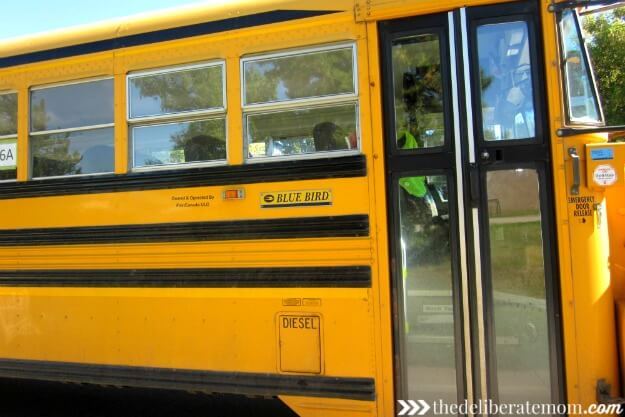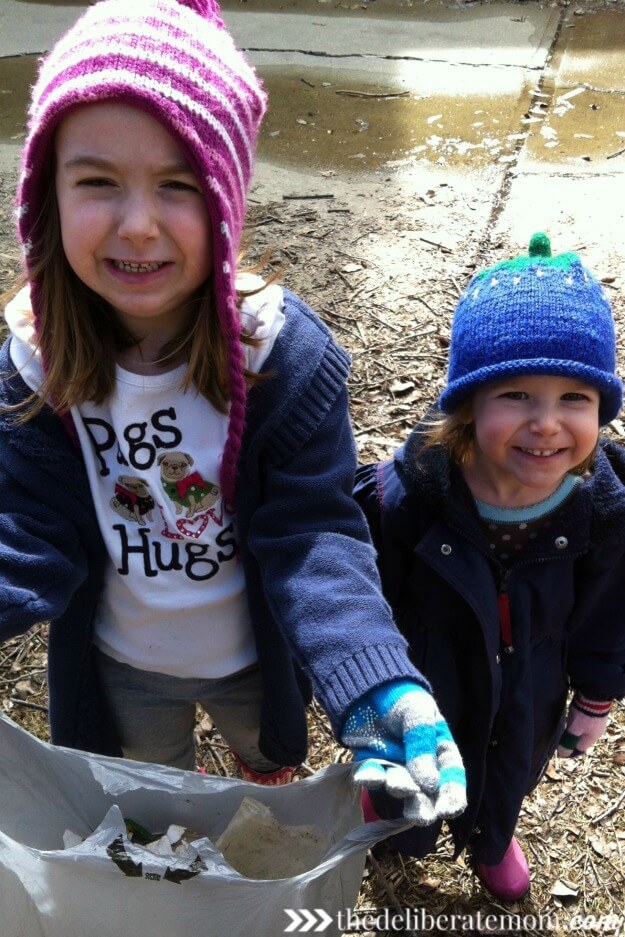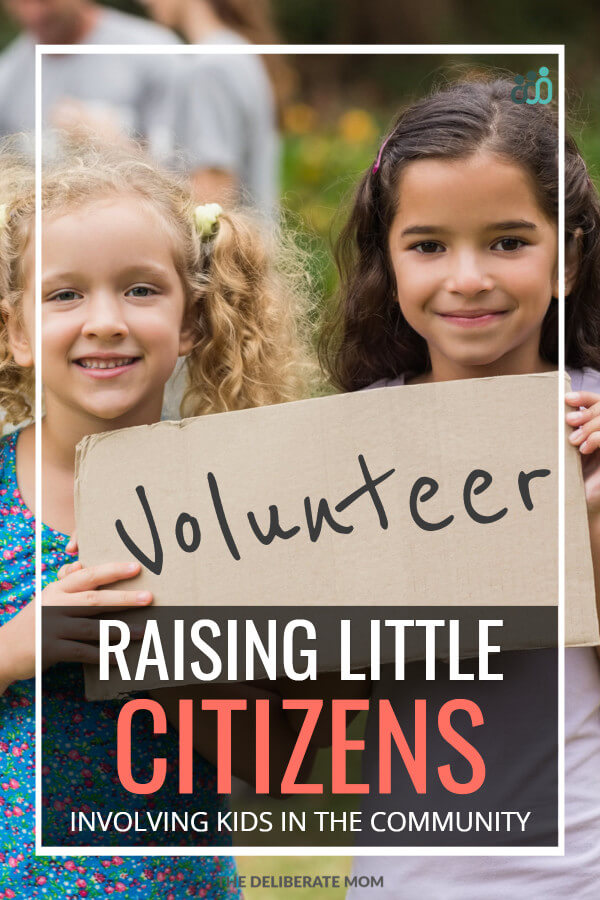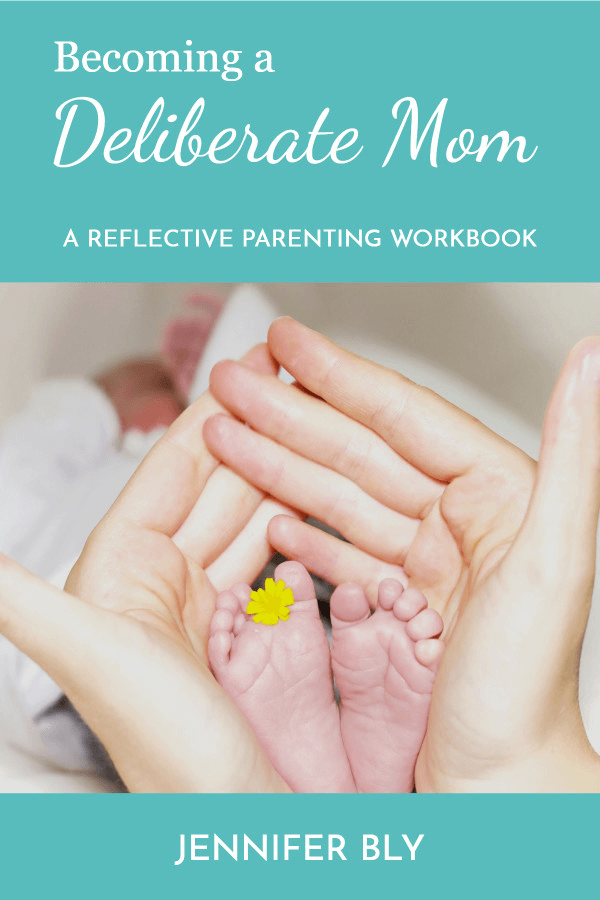Children are a part of our society from the moment they are born.
With their first breath we welcome them into the world and their first cries let us know that they are here as the newest members of society.
Children are citizens.
Think about that for a moment. Imagine what that means for them and what it means for you as a parent.
I recently wrote about what today’s children really need. In the article I indicated that:
* Children need to feel they are part of the community.
* Children need opportunities to contribute in a meaningful way to society.
However, what does it mean to be a citizen? How can our children give to society? What can we do to help our children understand that they are important members of the community and that they can have an impact our world?
Over my 20 year career as an early childhood educator, my view of children shifted greatly. When I started working in childcare, I viewed children as cute little beings who needed care, love, attention, and protection.
However, I now hold the philosophy that children are competent and capable of more than what most people would give them credit for. Children are people who need care, love, attention, and protection while being empowered to reach their potential. It is our job to help them explore, question, and challenge the world around them.
Here are some suggestions on how to raise our children to be passionate and involved citizens.
What can we do to raise our children to be passionate and involved citizens? #parenting Click To TweetHelp children understand the different parts of their community.
Before becoming an active part of the community, children have to be properly introduced to their community. The first step is to take children out of their fenced yards and explore their neighbourhood. Ditch the car and walk to as many places as you can.
What captures your child’s attention? Perhaps there’s a construction site nearby. Take the time to observe the work and the transformation of the site. Return every few days and discuss the changes taking place.
Allow your child to take pictures of the things they see. Usually children photograph things that adults overlook or take for granted. Use these pictures as prompts for discussions and further exploration.

A photo my daughter took of a yellow school bus.
Another idea is to work with your child to draw a map of the community. Where is everything in relation to their house? Where are other people’s homes? Attach names or photos to the map.
Also, children can assemble a photo book and journal about their neighbourhood. The pictures they take on walks can be placed into the album with a short paragraph describing each photo.
Help children feel like they are part of the community.
While you’re walking and exploring your community, look for ways to help your child feel included.
Neighbourhood walks are a wonderful way to meet fellow community members. Say hello to the people who pass by. If you run into a neighbour, take a few minutes to talk and allow your child to speak to the neighbour as well (only if your child is comfortable doing so). The playground also provides ample opportunities for children connect with one another.
Pick up a couple of items from a nearby grocery store. Bring cash to the grocery store and perhaps your child can pay for the purchases.
Walk to the post office to mail a letter to a friend. Encourage your child to speak with the postal worker and purchase a stamp from them.
If you have a nearby library, spend some time there and encourage your child to speak to the librarians about the types of books they are interested in.
If there is an election taking place, bring your child along with you to the polling station. If they can read, you can introduce them to a simplified version of the candidates’ platforms and ask them who they would vote for.
Give children opportunities to contribute to the community.
Once children are introduced to the community, we can provide opportunities for them to contribute in meaningful ways.
Children can help shovel a neighbour’s sidewalk. They can also work in a community garden. Children can make and deliver welcome letters for new families in the neighbourhood. Children can also keep the community clean by regularly picking up litter.

Picking up litter in our neighbourhood.
As someone who has previously used the food bank, I try to encourage my children to understand the importance of donating food to people who need it. When grocery shopping, I may ask them to choose a few non-perishable items for us to donate. At the end of the grocery trip, my children place the food items in the donation bins.
Pay attention to your child’s interests and passions. If they are concerned about the welfare of animals, perhaps you could give them opportunities to volunteer at your city’s animal shelter. If they are curious about homeless people, collect some clothes to give to the needy or deliver coffee cards to a homeless shelter.
This is just the beginning… we’re not just raising children, we’re raising a future. We’re raising hope. We’re raising the next generation of citizens.










What great ideas here and seriously pinning to refer back to! Thanks for sharing, Jennifer!! xoxo ;)
I’m so glad you enjoyed this Janine… and thanks for pinning!
Terrific post. I remind our five grandchildren ( ages-5-16) that they are our future and they must fuflfill their education and their potnential. Because they are our future. I also remind them of the importance of fueling their passions and in theiur part in heloing our earth and contributing to community. xo
I’m glad you enjoyed this Katherine. It’s so important to help them to achieve their potential as future decision-makers and action-takers for our country.
Thank you for sharing your thoughts on this.
oops sorry about the type o in my revious comment…:-)
Hi Jennifer! I like the idea of having children take photos. And they LOVE doing that too. It would be fun to see what catches their eye. And the neighborhood map is a great thought too. I wonder what really sticks out for them that I would miss?
Interesting progression in your thoughts about the capabilities of a child. I think your background has really helped you become such an effective mom and writer. God is good!
Have a great start to your week my friend,
Ceil
My daughter had her own photography blog for a couple of years. Some of her photos are just stunning. I stopped updating it a while back because it took so much time but I would like to bring it back again.
God is indeed good.
Thanks for sharing your thoughts on this my friend.
What great tips! We recently gave our 3 year old the camera and wow, were we surprised? Not only does she take better pictures than I do, we got to see the perspective from which she sees the world.
Here in Seattle, the homeless population blooms during this time of year. We just started putting together some necessities bags for the car and the little one is very excited to know that she is helping.
Thanks for the tips!
I’m not sure if you knew this but for about 2 years I had a photography blog for my daughter’s pictures. I started it when she was 4 because I was in awe of the way she “saw” things.
I’m glad you enjoyed these tips. Thanks for sharing your thoughts on Raising Citizens as well.
I teach kindergarten and I’m always telling my students that just because they are young doesn’t mean they can’t make a difference in the world they live in. Surprisingly, they get it. Just last week we were talking about keeping God’s world clean by not littering, etc. When on the playground they saw some litter and wanted to clean it up. Awesome, they actually listen in class! Enjoyed your post!
I’m glad you enjoyed this Michelle. Children need opportunities to contribute to their communities and their efforts DO make a difference!
This post is really relevant in my life right now. My son wants to paint the fire hydrant in our front yard, so I told him we have to talk to the mayor. I’m having him write a letter and we’re going down to town hall to deliver it. I’m going to include a few of your ideas, as well and see where it goes. I find it hard to sometimes simplify our society and how the government works…but I’m trying. And, I’m having a little fun with it, too.
I love that you’re involving him in this way!
We rarely go to our community playground because it’s always full of teens who are swearing and talking about really inappropriate stuff. My eldest daughter recently said we she do something about it… so we’re working on a letter to our City Councillor. It may not “go” anywhere but it’s worth a shot!
This is wonderful. I am going to share this on my Facebook page this week. I did 13 years of Girl Scouts and was able to take part in many different community activities and find some of my passions. I have a dream of starting my own troop with a small group of girls once my daughter reaches kindergarten. :) For now, this is all great advice.
My oldest daughter is in Girl Guides (which is very similar to Girl Scouts) and I love how they instill community care and values in the children.
I think the biggest part to making this successful is letting our children leave their backyards! So many children are hidden behind fences and walls. How are they supposed to care about the world if they’re barely living in it?!
Thanks for your kind words… and for sharing.
AWESOME POST, as usual you hit the nail on the head with these parenting pieces. I had never thought of children in this way, nor had I even come close to thinking about all of the wonderful examples you used. I remember my mom had us help pick up litter once with a big group of people and I never forgot it. I felt so important that day and ever since, I’ve felt protective of the earth and don’t like seeing litter. These things definitely make such an impact on their lives. Also, I really really love the idea of letting them take pictures; my sons ALWAYS take pictures of things I never think about. I know they would think it was very cool to let them take pictures of our neighbourhood and put them in an album. Great post Jennifer, thanks for sharing!!
My girls and I pick up litter at least once a week in our neighbourhood. I did it a couple years ago with them and they beg to do it all the time. I love that they take pride in keeping their community clean.
Our kids need to experience life outside of fences and walls. The experiences they have influences their perception of their community and their involvement in it.
I’m delighted you enjoyed this Jessica!
Oh boy – the things we can learn from our children and what they can learn from us!! Scarlet is so involved with caring for pets and gardening and walking around town and cleaning up litter. And helping people! That’s a big one. She once saw her dad stop to help someone with a flat tire, and she actually asks me to go out and look for people in need! I love kids.
And of course, it reminds me to really watch my words and actions.
That demonstration and participation in helping others is huge… and so important. If we want our children to care about others and their community, we need to set that shining example. They see everything.
Hi Jennifer, what we do now with our children does reflect on their attitude and outlook in the future. They look to us for advice and guidance, so by encouraging them to show interest in others and that helping others less fortunate than ourselves, they hopefully grow up to become good people, who are thoughtful and caring.
Teaching them to care not juts about people, but about their environment is just as important too.
Great post!
xx
Sometimes the things we take for granted make for wonderful learning opportunities for our children.
I’m delighted you enjoyed this post Debbie!
I love how you point out that children need to understand their community before they can get involved. I think that’s such an important step Jennifer.
I think some parents think that when our children are so young they can’t really be very involved. But there are so many ways they can be, if we just think of creative ways.
Great post lady!
xoxo
I’m so glad you enjoyed this Tiffany.
Yes, so often adults underestimate what a child can experience and process! Like you said, we just need to be creative.
You are right that children need to get to know their community. Sometimes we are so busy (guilty as charged) to make it to school on time or to the next soccer practice that we do not stop and explore. I remember on our way (run) to school the other day my son pointed to the garden in front of our building to the grass. I did not look at it much for I was so concerned about the time. Then he asked me if I saw the little flower that was not there yesterday. I said “yes” but didn’t see it. He noted that it is spring already if the flowers started coming out. After I dropped him off I kept thinking about it and realized that each morning and evening we rush and not really stop and look around. Those are memories that our children carry all their lives, and we sometimes do not help them create them.
Thank you for your thoughtful post that made me realize that I have to slow down and help my child not only look around but see the world.
http://fabsinglemom.com/2015/03/27/stop-trying-to-predict-life-and-start-living-it/
Children are just absorbing everything around them. I find when I tune into what they’re seeing or saying, I’m taken to a whole other level of truly living and being in the moment.
I’m delighted you enjoyed this post and I hope you find those opportunities to slow down.
Yes they are and you are right they LOVE to be involved. We talk about all the different kinds of community members, and visit firefighters, and even volunteer at a barn once a week. It’s fun to be a part of something!
It’s so much fun to be part of something bigger! I love planning opportunities for my girls to be involved and sometimes the natural, everyday, organic experiences are the most beneficial.
So many great tips here, Jennifer. I just tweeted this as it should be shared with as many people as possible :). I had to use government assistance many years ago as well. I definitely want my children to know how easy it is for this to happen to people and the importance of serving. Thanks for this important post! I love the idea of encouraging our children to speak to postal workers, librarians… in our communities.
It’s really up to us to raise our children to care… to want to serve… to desire the opportunity to contribute to society.
I’m so delighted you enjoyed this! Thanks for tweeting Candace!
Great ideas! If we are too busy sheltering then our kiddos don’t get a sense of the community they live in. Neighborhood walks and trips to the library are my favorite.
While I enjoy neighborhood walks, I think I need to switch gears into seeing it as a time to meet people and be a part of the community. Currently my focus is on exercise and time with my family. Your post helped me to see another side to the walks. :)
I think it was great to add to pay attention to children’s interests and passions. It’s great to capitalize on interests the children already have. It will feel less like something “mom made me do”. :)
I’m delighted you found some ideas and inspiration in this post Emily! Our children really need to be exposed to these things at a young age… how else will they come to know, love, and care for their community/city/country/world?!
Thanks for sharing such a thoughtful and reflective comment… it made my day.
I love these ideas. It truly takes a village. Unfortunately we often get to busy to remember to nurture these things in our children, and when we don’t we produce adults that often over look these important issues. Thank you!
I’m delighted these ideas resonated with you. You’re so right… we need to nurture these things so our children will be passionate about their community/city/country/world. It starts with us.
First, let me say that I went over to Huffington Post to see the article about the Food Bank. What I saw in the comments horrified me. I cannot believe the judging. I honestly think people who are negative in the comments are actually trolls who aren’t regular readers of anything HuffPost (which tends to be very positive, progressive, open-minded and informative), but are only there to attack and detract. I’m sorry you experienced that. I loved your article. I thought it was very clear and painted a perfect picture of why we need to help the Food Banks whenever we can – because there are plenty of people who are falling through the cracks.
********************
Okay, now onto this article. I love all of it. We encourage our kids to interact with people when we are in the store, or the post office. The ladies who work at the library in our neighborhood know my kids very well. This summer, we are planning to go up to the Retirement Village in our little town and see about playing games with the residents – Chess or Backgammon or just hanging out with them to see what kinds of games they would like to play.
I especially like the idea of letting our kids take pictures. I want to try that soon. I know they would focus on different things than I do and it would be interesting to look at their perspective. Thanks.
Thank you for reading the Huffington Post article (and for your kind words). I was so disappointed at the way people reacted and behaved towards me and one another on that post. It’s sad that there’s so much judgment out there… and in no way was I endorsing my poor decisions… nor was I asking for any kind of sympathy. I simply wanted to share my story about how the food bank helped me get on my feet again.
I’m delighted you enjoyed this post. It’s so important to expose our children to “being” a community member and we can start at a young age too!
My daughters love to take pictures and I just adore seeing the surprises on the camera after they’ve had a “photography session” of their own.
Does Twitter show up now? I’m sorry. I’m having trouble following directions.
These are some wonderful ideas. I’ve been thinking a lot on this topic for the last few months and trying to find small ways to get my kids engaged in the wider world. Lots of walks in the community, biking, digging, and they have joined me to vote every time I’ve gone.
I like the picture idea. I may give that a go. Thanks for the inspiration!
I take my children with me when I go to vote. I think it’s important for them to see me taking part in the democratic process (except for the time when my daughter loudly announced who was voting for) LOL.
Great post, Jennifer! I would have never thought about these kinds of things but I will definitely be implementing them as Scarlett get’s older. She loves to help me pay for my groceries already and help with small tasks when we’re out and about. I love the part about letting your children take pictures (of course) I would love to see what Scarlett would capture :)
I’m glad you enjoyed this post Tawnya and that it sparked some ideas for you. I love seeing my girls’ photographs. They amaze me every time.
Children are the future. The future decision makers, future leaders, future everything. Helping them to understand things like this early will make a huge impact as they grow!! What a great post, Jennifer!!!
Yes! Yes! Yes! It’s up to us to prepare them for those big roles they will fill later on in life… and to give them a passion for the world around them.
This post is a great reminder of the simple things we can do to encourage our kids to care about and connect with others. It also helps if parents lead by example. We shop local independent businesses and take time to chat with small business owners, we go to community events and open houses, joined the Chamber of Commerce, volunteer at an agency that trains service dogs, are Friends of the Library, take our kids with us to vote on Election Day, and my dh recently was appointed to our local Board of Zoning Appeals.
None of these things take an inordinate amount of time, but they sure do add up.
You’re so right Susan, all of those little things add up and collect in our children’s minds. The spirit of caring for their community is role-modeled and learned. I love the examples you shared. Thank you!
These are all so important! Love how you get your daughters involved with the community. I can’t wait to do that with Char one day. We’ve started with getting more involved with our church, and I think that’s the perfect place to start for us.
I want my girls to care about their community… it’s so important.
Church is a wonderful way to start contributing.
I’m glad you enjoyed this Kristy.
These are great suggestions! I think most times society has expectations for children to do more or they say “this generation doesn’t care” but they don’t think about how to change things. I agree that it starts now when the kids are young and when they can learn the behaviors of how to contribute to the community but it takes work and thoughtfulness of the parents. These type of ethics and thought processes don’t come naturally to most kids but if they are involved from an early age and are shown by example then they are more likely to continue as they get older and into adulthood. Thank you for your insightful post!
I’m delighted you enjoyed this… and yes, it starts here and now with guiding and educating our children. We can raise caring and passionate citizens!
Thank you so much for stopping by and taking the time to comment and connect. I love new friends! Welcome!